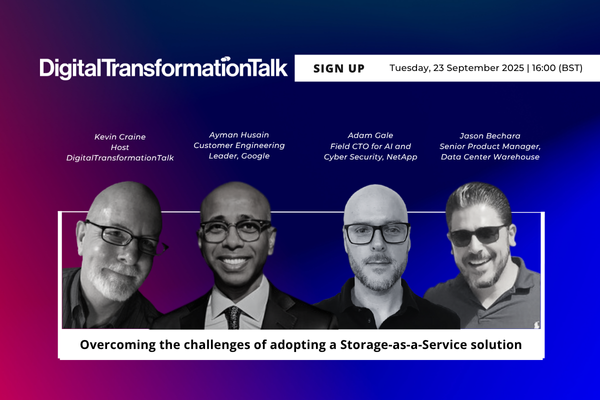How product data foundations and embedded AI are a strategic advantage
Sponsored by PTCAyora Berry, Vice President of AI Product Management at PTC
Generative AI (gen AI) isn’t just another tech trend – it’s a categorical shift in how people work. The question is no longer if AI will impact your business, but how fast and how deep.
For leaders of manufacturing and product companies, the challenge is clear: how do you benefit from this industry transformation? At PTC, we believe the answer lies in a practical formula:
Product data foundation + embedded AI = strategic advantage
The good news is you’re not starting from scratch. You’ve been building your product data foundation. Now, AI can help you get more value from it.
Product data foundation
AI is only as good as the data it uses. For manufacturers, that means your product data foundation is not just important, it’s essential.
Your product data foundation consists of all the product data defining your product throughout its lifecycle, including requirements, 3D models, bills of materials (BOM), spare parts information and more. This data is structured, controlled, secured and traced in enterprise software, and includes:
- Structured data to represent company and product IP
- Access controls to protect intellectual property
- Security protocols to meet compliance requirements
- Data versioning and lifecycle states for traceability and auditability
Companies have been on a digital transformation journey, creating this product data foundation. Many started with siloed, manual processes and are moving to enterprise systems and consolidating their data. Now, they’re advancing their digital maturity with richer data and more advanced workflows. For example, shifting from doc-centric to part-centric PLM or linking requirements and tests for traceability in ALM.
This foundation is already delivering value. With embedded AI it can deliver more.
Embedded AI
Gen AI allows us to embed a new class of software – AI agents – in the tools you use every day. These agents can reason, plan and execute tasks on your behalf. Research shows 15 to 40 per cent of AI’s economic potential will come from gen AI, and by 2030 there will be millions of agents.
We describe the maturity curve of AI agents in three stages:
Advise. Agents that answer questions, summarise documents and retrieve information, such as Windchill AI surfacing engineering documentation or Onshape AI Advisor answering troubleshooting questions.
Assist. Agents that take on parts of workflows, such as Codebeamer AI reviewing requirements or ServiceMax AI optimising service schedules.
Automate. Agents that execute entire workflows – working across systems with minimal human intervention. For example, connecting Codebeamer and Windchill agents to automate change impact assessments.
These AI agents will change how we work in three ways, by:
Scaling access to knowledge. Gen AI can pull and summarise information across systems in seconds – for example, tools such as semantic search and chatbots can cut search time by up to 30 per cent, a significant gain given workers spend eight to ten hours per week searching for information.
Reducing repetitive tasks. AI can take on routine work such as requirements authoring and design validation, executing tasks that are tedious and complex. Studies show it can decrease quality errors by 20 per cent and speed up design by 20 per cent.
Redefine how people work. Agents will automate tasks and even full workflows, freeing people for higher-value work. In some cases, they’ll act as specialists – doing things such as market research or supply chain analysis. Gartner predicts that by 2028, 33 per cent of enterprise software will include autonomous AI, automating 15 per cent of daily work.
AI also comes with challenges. One key area is managing risk associated with AI creating or changing data. Low-risk use cases involve AI assistants answering questions or executing tasks with human review. High-risk use cases need scrutiny – especially when AI impacts critical data. For example, a supplier using AI to break down RFPs into requirements: if the AI alters or merges keywords, problems can arise.
That’s why embedding AI into your software matters. Control logic manages each step, and tracing tools mark changes to business objects – trusted methods for managing cost and quality that embedded AI adheres to.
Another strategic effort in your digital transformation is connecting these agents into a bigger system where data and AI work together across the product lifecycle.
Intelligent Product Lifecyle
The Intelligent Product Lifecycle is PTC’s guiding vision for helping companies build their product data foundations and extend the value of that data across the full lifecycle.
Core to this strategy is delivering AI use cases purpose-built for industry, that include:
- Requirements agents accelerating product definition
- 3D modelling agents validating and optimising part designs
- Product lifecycle management agents improving engineering efficiencies
- Service planning agents optimising spare parts inventory
- Field service agents streamlining maintenance delivery
Underpinning these use cases are foundational AI technologies – agentic, data and model services focused on enterprise security, reliability and quality.
In more than a decade implementing AI solutions, PTC has worked with customers and partners to learn what works and doesn’t. With gen AI, we’ve learned some particularly important lessons.
Firstly, advance your digital transformation. A strong product data foundation is the launchpad for AI. If your data is siloed or unstructured, start by consolidating systems, enforcing governance and linking critical artifacts such as requirements and BOMs. This groundwork ensures AI can deliver accurate, trusted insights.
Secondly, start small to limit risk before you scale. Begin with targeted use cases that demonstrate early wins such as smart search, or discrete tasks such as requirements review. Keep in mind the risk profile, ensuring that AI acts with humans in the loop. As you gain trust with AI and deliver value, scale to higher impact automation use cases.
Last, but not least, cultivate an AI-first mindset. Technology alone won’t drive transformation. Equip teams with AI literacy, establish governance for responsible use and foster a culture that embraces human-AI collaboration that acts as a multiplier for AI’s impact.
As you seize this gen AI opportunity, PTC can be your strategic partner. With our Intelligent Product Lifecycle strategy, portfolio of software across that lifecycle, and more than ten years of applying AI, you can rely on PTC to help your organisation move from ideas to delivering results.

Business Reporter Team
Most Viewed
Winston House, 3rd Floor, Units 306-309, 2-4 Dollis Park, London, N3 1HF
23-29 Hendon Lane, London, N3 1RT
020 8349 4363
© 2025, Lyonsdown Limited. Business Reporter® is a registered trademark of Lyonsdown Ltd. VAT registration number: 830519543





